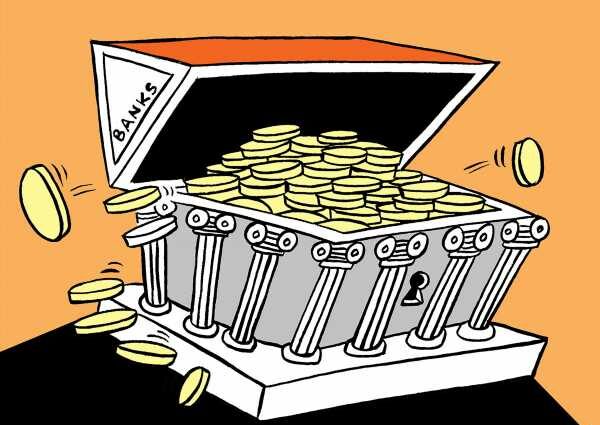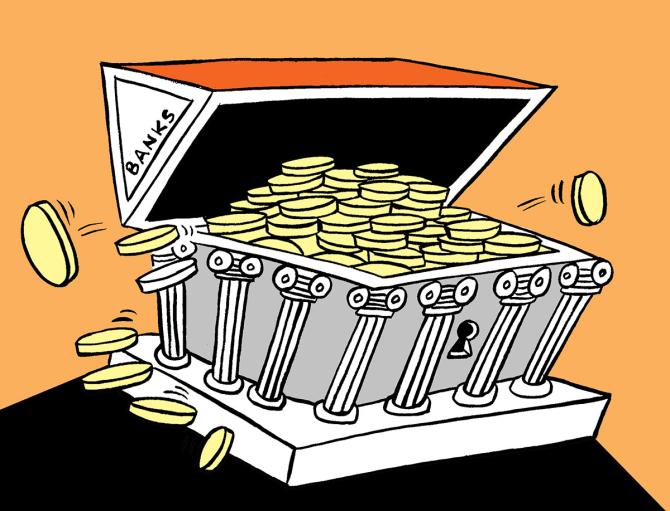Despite rising interest rates, and high inflation, the banking sector is doing well, on the back of a recovering economy.
The last couple of quarters indicate credit demand is picking up and Return on Assets (RoA) is more than acceptable at the moment.
The PSU bank pack may be more interesting at the moment simply due to being valued at far lower multiples than the private banks.
In terms of index valuations, the Nifty private bank index is at a current price to earnings or PE of slightly over 16 times (x) while the Nifty PSU bank index is at a current PE of about 9x.
This, despite strong outperformance by the PSU bank index, which is up 50 per cent in the last 12 months while the private bank index is up 16.8 per cent.
The entire sector has beaten the Nifty (up 6 per cent in the same period) comfortably – the Bank Nifty, which includes both private and PSU banks (though private banks have far higher weighting), is up 16.6 per cent.
Bank credit went south in the third quarter for the 2019-20 financial year (Q3FY20) and stayed negative till FY23. In Q3FY23, non-food bank credit has grown 16.7 per cent year-on-year (YoY) with segments like agriculture, industrial, services and retail reporting a growth of 14.4 per cent, 8.7 per cent, 21.5 per cent and 20.4 per cent, respectively, on YoY basis.
On an incremental basis, January’23 credit growth moderated but stayed positive.
Industrial segment’s credit growth was stable at 8.7 per cent YoY, but lending to the NBFC (non banking financial companies) segment moderated and hit a 4-month low at 31 per cent YoY and was down 2.5 per cent month-on-month (MoM).
In the retail segment, growth was sustained by high-yielding unsecured loans and vehicle finance.
One negative is weak deposit growth, which is prompting upwards repricing of deposit rates with loan-deposit (LD) ratio rising to the above 75 per cent mark. PSU banks have lower LD ratios compared to the larger private banks, which are edging into the 90 per cent zone.
Net interest margins (NIMs) were up through Q3 but likely to moderate going forward as a result of this.
In the 2023 calendar year, PSU banks have seen sharper corrections, largely due to Adani exposures.
Among the 12 PSBs in the Nifty PSU Bank, most have credit growth in the range between 12 per cent and 22 per cent.
While tailwinds on growth revival will benefit all the PSU banks, SBI, Bank of Baroda and Canara Bank have the best capitalisation levels, decent profitability and good RoA along with reasonable price to book value or PBV levels.
The PSU bank valuations have narrowed down and a further narrowing in terms of PE and PBV discounts is likely if the trend continues.
Hence, the PSU bank space is relatively more attractive than private banks.
Source: Read Full Article
-
Lionsgate CFO Says Strike Is Squeezing Management And Production Subsidiary 3 Arts, With Roughly $30M Quarterly Revenue Hit; Expresses Hope For “Mid-Fall” End To Walkouts
-
Peacock At 18M Paid Subscribers, Up From 15M In Sept.; Jeff Shell Says Universal Now Rivals Disney Animation, Sees “Big Check” Coming For Hulu Stake
-
The 14 Least Trusted Institutions in America
-
How China’s Largest Weapons Manufacturer Compares to US Arms Corps.
-
Toronto Film Festival Names Buffy Sainte-Marie As Tribute Award Honoree, Unveils Musical Guest & Presenter Lineup For 2022 Gala


